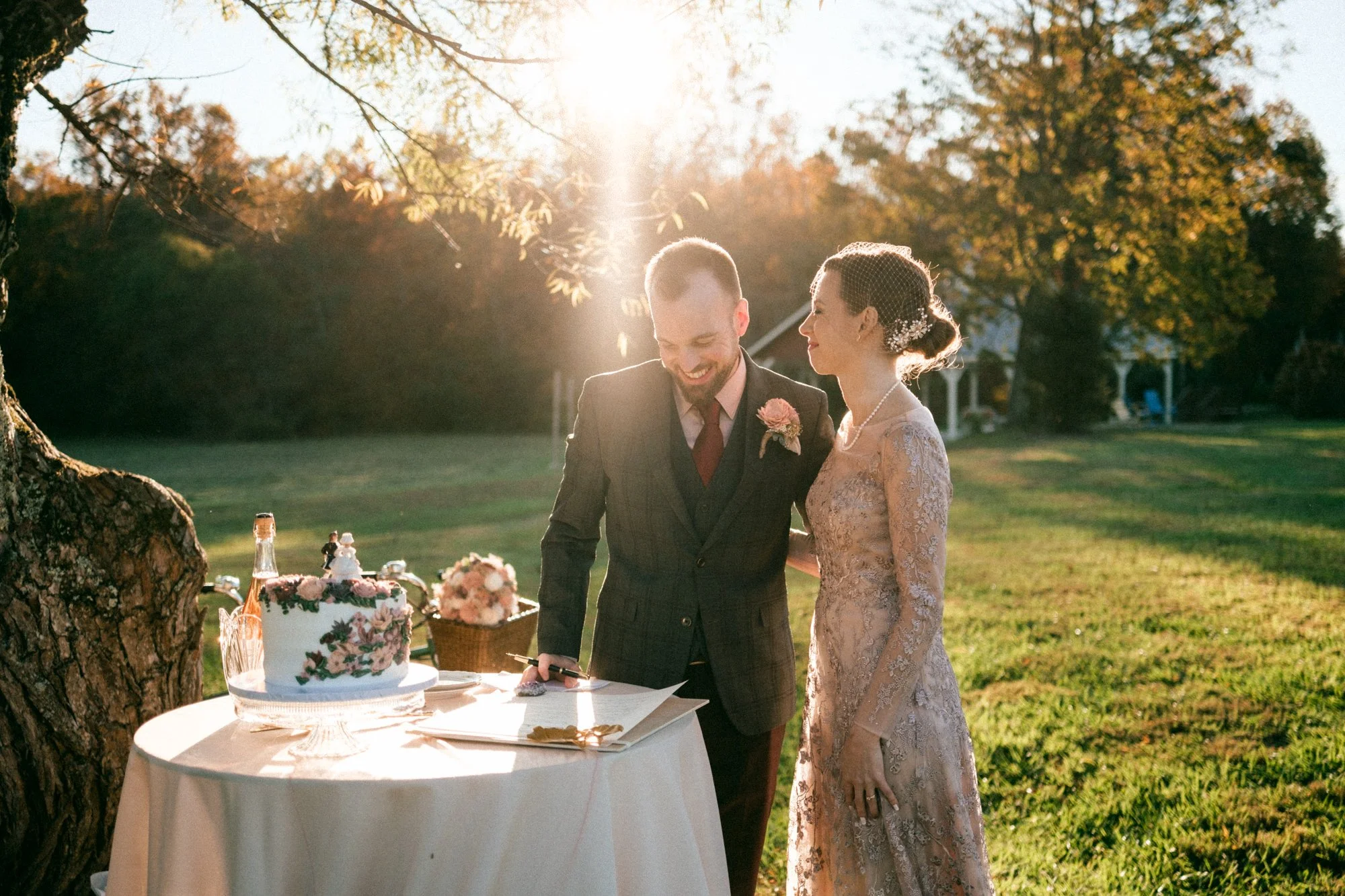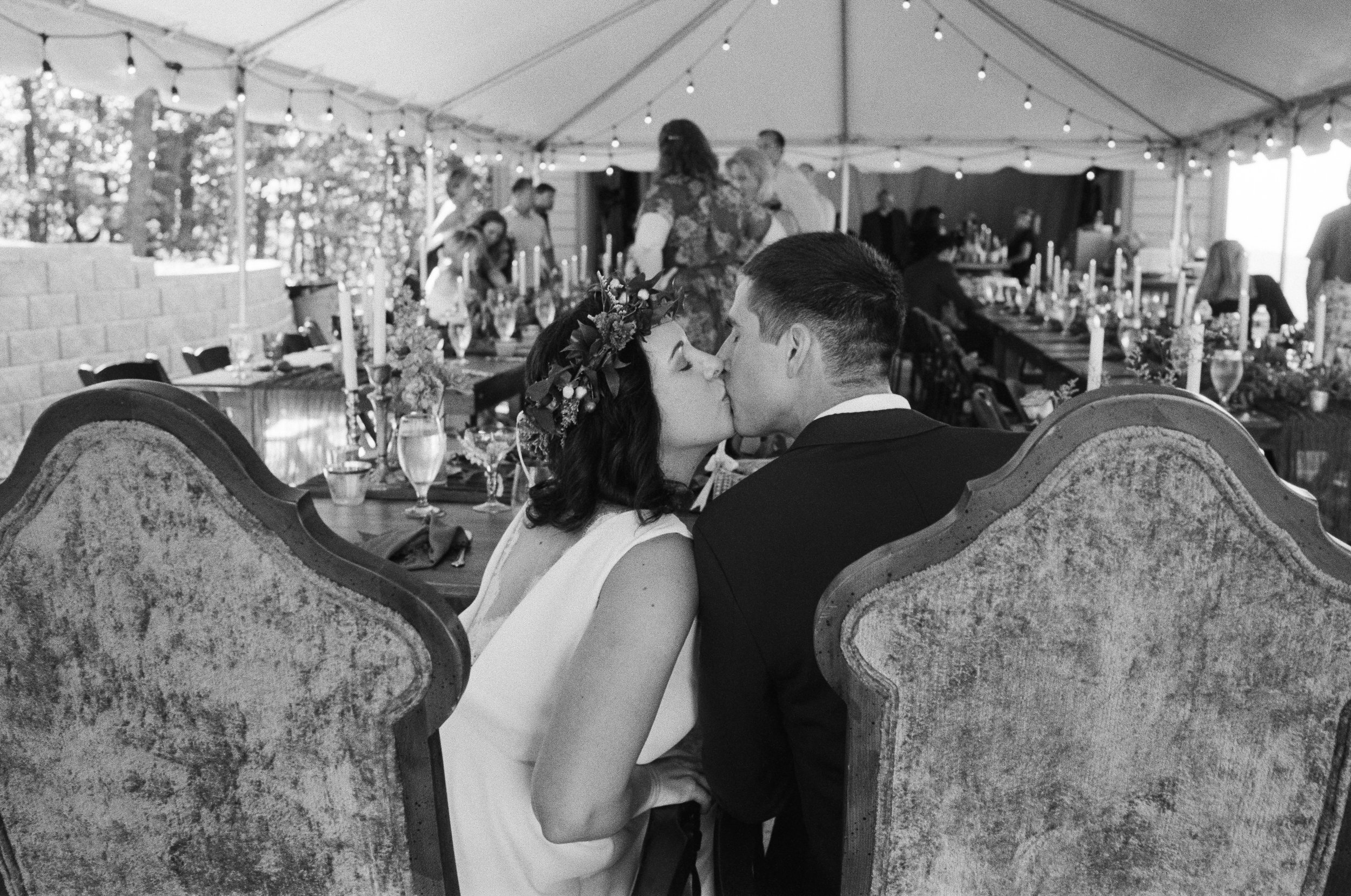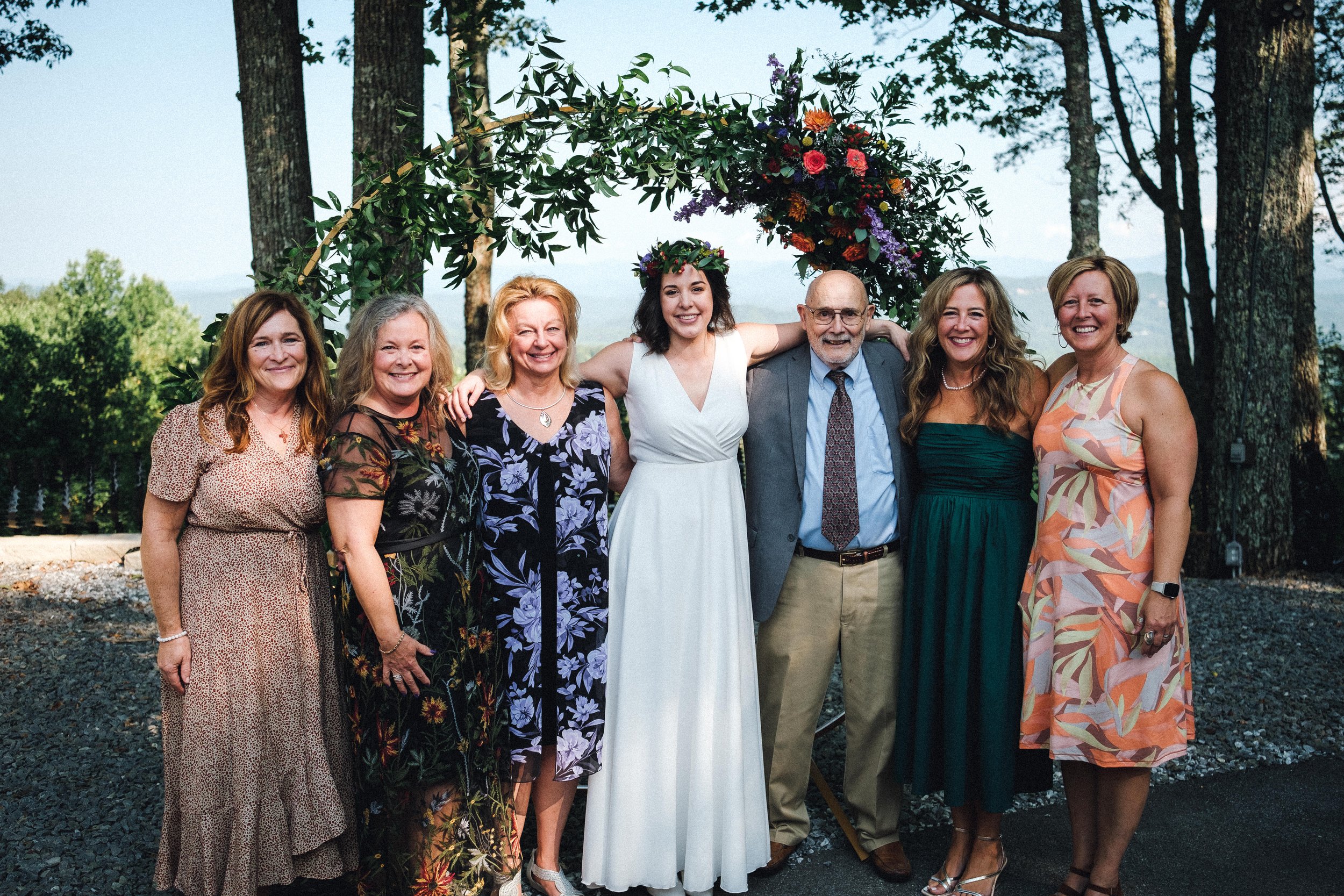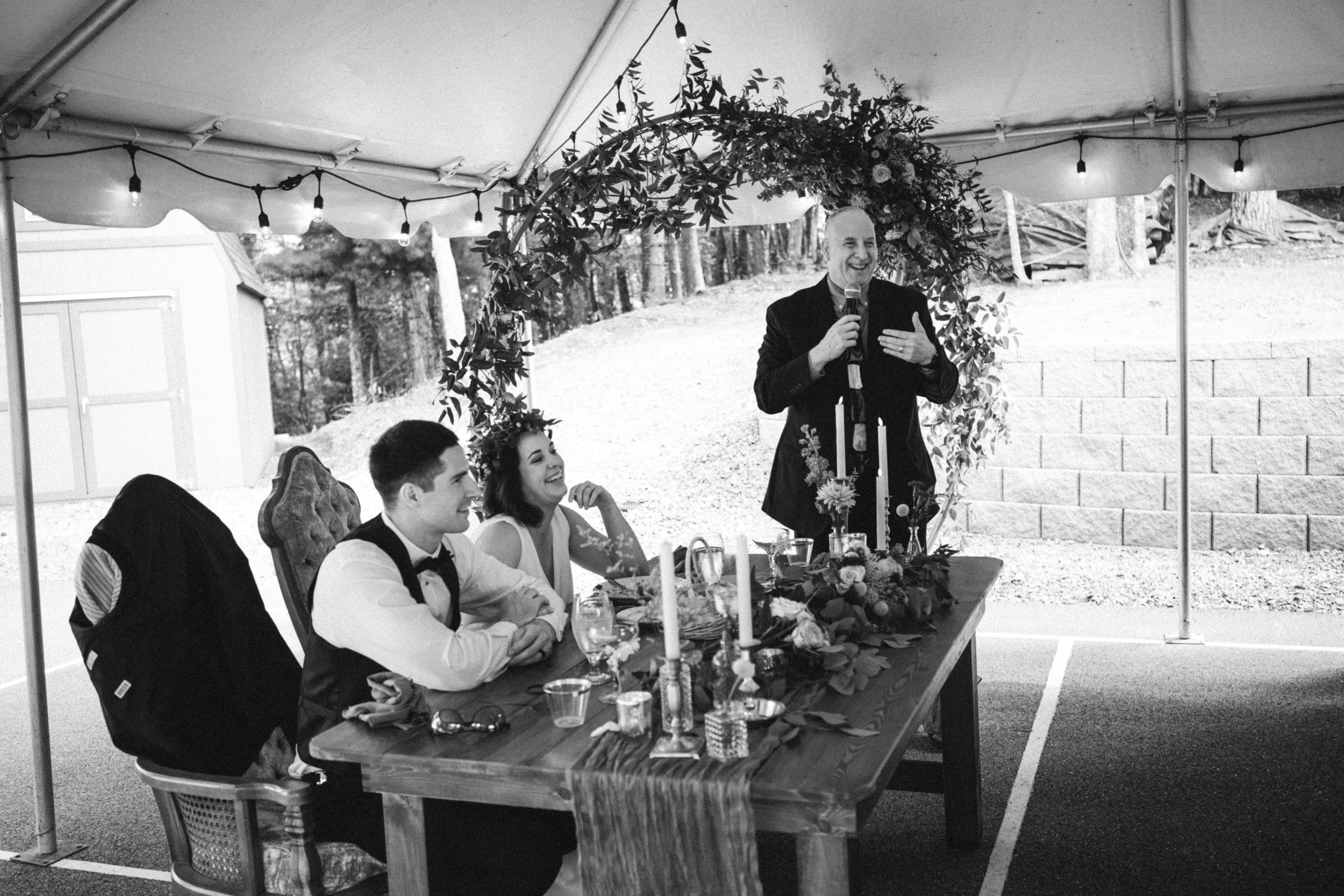I know you will agree that this mountain nuptial takes the cake.
Did you know that I (Emilie) am an officiant and sometimes act as the official documentary person who makes the marriage officially official? Yep, that is right. Couples share their own vows to each other while Chad and I shoot their elopement or wedding and I sign off on the paperwork.
This precious couple even had their best friend at the wedding and stamped their signature with their paw as a witness. Paw-fert. Don't you think?
To add to the vintage vibe, this elopement was shot mostly on analog film. Kodak Portra 800 film really is a perfect medium to capture the color palette they chose.
Couple: Natalie and Mackenzie
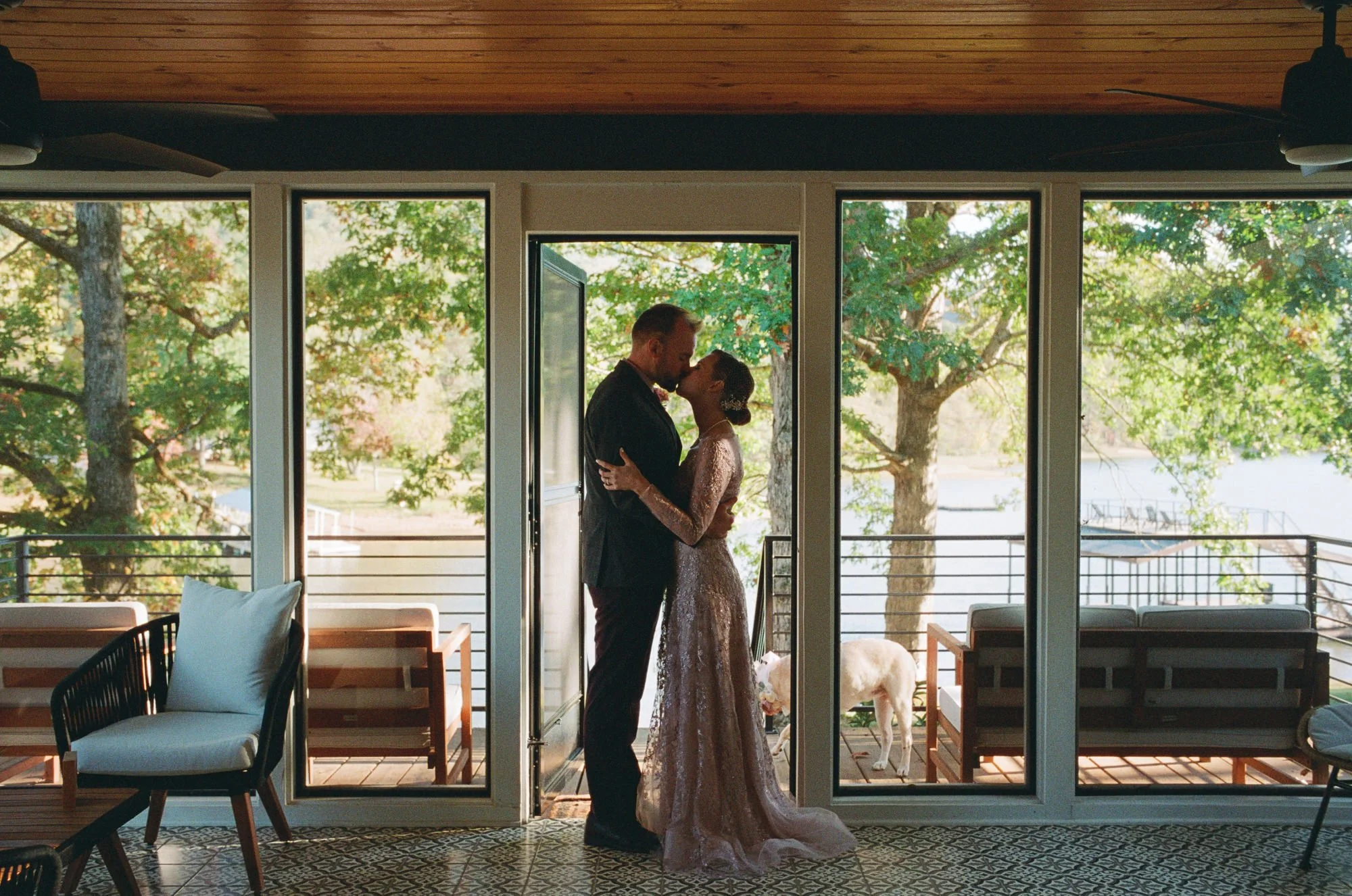
Photography: Appalachian Wedding Photography @appalachianweddingphotography
Venue: Tranquille Resort @tranquilleresort
and The Barn at Young Harris @thebarnatyoungharris
Florist: Sola Wood Flowers @solawoodflowers
Dress: Lara New York @laranewyork
Hair and Makeup: Kailey Graves @hairby_kaileyg
Brides ring and wedding bands: Aurum studios @aurumstudios
Brides shoes: Betsy Johnson @betseyjohnson
Cake: Bee Knees Bakery @beeskneesbakeryathens
Grooms attire: Men's Warehouse @menswearhouse
and Jos Bank @josabank



























